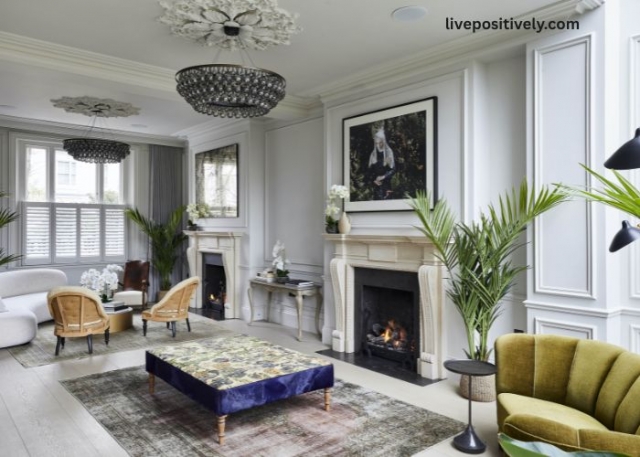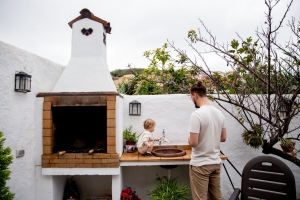Victorian homes are renowned for their ornate architectural details that exude elegance and craftsmanship. Among the most striking elements are the decorative ceiling features that draw the eye upward and create a sense of grandeur. Whether you're restoring a period property or adding Victorian character to a newer home, understanding how to select and combine ceiling roses, coving, cornices is essential to achieving an authentic and harmonious look.
Understanding Victorian Ceiling Decorations
The Victorians were masters of decorative plasterwork, using ceiling embellishments not just as aesthetic features but as statements of status and taste. Each element served both a decorative and practical purpose. Ceiling roses centered around light fixtures, concealing wiring while adding beauty. Coving smoothed the transition between walls and ceilings, while cornices added architectural definition and visual interest.
Victorian design principles emphasized proportion, symmetry, and hierarchy. The size and elaborateness of your ceiling decorations should reflect the room's dimensions and purpose. Drawing rooms and dining rooms typically featured more ornate designs, while bedrooms and secondary spaces had simpler treatments.
Assessing Your Space
Before selecting any decorative elements, take time to evaluate your room. Consider:
- Ceiling height - Higher ceilings can accommodate larger, more elaborate designs. For lower ceilings (under 8 feet), choose shallower coving and smaller ceiling roses to avoid overwhelming the space.
- Room dimensions - The size of your ceiling rose should be proportional to the room. A general rule is that the diameter of your ceiling rose should be approximately 1/6 to 1/8 of the shortest wall length.
- Architectural period - If your home was built during a specific period of the Victorian era (Early, Mid, or Late Victorian), research the typical styles from that time.
- Existing features - Consider any original architectural details that remain, such as fireplaces, window surrounds, or door casings. Your ceiling decorations should complement these elements.
Selecting the Perfect Ceiling Rose
Ceiling roses create a focal point and draw attention to lighting fixtures. When choosing a ceiling rose:
Consider scale: A ceiling rose that's too small will look lost, while one that's too large will overwhelm the space. For a room measuring 12 x 12 feet, a ceiling rose with a diameter of 18-24 inches would be appropriate.
Match the period: Early Victorian roses (1837-1850s) were typically simpler with classical motifs. Mid-Victorian designs (1850s-1870s) became more elaborate with deeper relief. Late Victorian styles (1870s-1901) often featured botanical motifs and intricate patterns.
Complement your lighting: The ceiling rose should enhance your light fixture, not compete with it. Ensure there's a logical relationship between the size and style of both elements.
Consider placement: Ceiling roses were traditionally centered in the room, not necessarily centered on the light fixture if it had been moved. If you're after authentic Victorian style, place your rose in the geometric center of the ceiling.
Choosing Appropriate Coving
Coving adds a soft, curved transition between walls and ceilings, contributing to the room's proportions and elegance. When selecting coving:
Consider the projection: This is how far the coving extends from the wall. Larger rooms with higher ceilings can accommodate coving with greater projection (3-5 inches), while smaller rooms look better with less prominent coving (2-3 inches).
Match your ceiling height: The height of your coving should be proportional to your ceiling height. A common rule is that coving height should be 1/40 to 1/30 of the overall room height.
Select the right profile: Victorian coving typically featured curves known as "ogee" profiles, sometimes with additional decorative details. Simpler rooms might have basic "cove" profiles, while formal spaces could have multiple steps and curves.
Look for historical accuracy: If you're aiming for authenticity, research the specific coving profiles that would have been used during your home's construction period.
Cornices for Character and Definition
While many people use the terms "coving" and "cornice" interchangeably, they're technically different. Coving features a simple curved profile, while cornices are more elaborate with multiple projections, steps, and sometimes decorative elements like dentils or egg-and-dart patterns.
When selecting cornices:
Consider the room's formality: More formal spaces like entrance halls and dining rooms traditionally had more elaborate cornices than private spaces like bedrooms.
Match architectural features: Your cornice should complement other decorative elements in the room. If you have ornate door surrounds or window casings, choose a cornice with similar level of detail.
Think about maintenance: More elaborate cornices collect dust more readily. Consider how difficult the design will be to keep clean.
Balance with other ceiling elements: If you've chosen an elaborate ceiling rose, you might want a simpler cornice to avoid competing design elements.
Creating Harmonious Combinations
The key to successful Victorian-style ceilings lies in creating balanced combinations that feel cohesive rather than chaotic. Here are some principles:
Maintain consistent level of ornateness: All your ceiling elements should have approximately the same level of detail and complexity. A highly ornate ceiling rose paired with simple coving often looks disjointed.
Use complementary motifs: If your ceiling rose features floral details, look for coving or cornices with similar botanical themes.
Consider the whole room: Your ceiling decorations should harmonize with other Victorian features in the space, such as fireplaces, picture rails, and dado rails.
Create hierarchy: In a Victorian home with multiple rooms, the principal rooms would have had more elaborate ceiling treatments than secondary spaces. Maintain this hierarchy for authenticity.
Installation Considerations
While selecting the right designs is crucial, proper installation ensures your Victorian ceiling elements look authentic:
Professional vs. DIY: Installing plaster ceiling roses and cornices requires skill. Consider hiring professionals for complex designs or if you're working with traditional materials.
Material choices: Traditional plaster offers the most authentic look but is heavier and more difficult to install. Modern alternatives like polyurethane or polystyrene are lighter and easier to work with but may not provide the same depth of detail.
Finishing touches: Victorian ceiling decorations were typically painted white or off-white to highlight their relief patterns. Avoid painting them in contrasting colors, which would be historically inaccurate.
Conclusion
Restoring Victorian charm to your home through carefully selected ceiling roses, coving, and cornices can transform ordinary spaces into extraordinary ones. By understanding the historical context, assessing your space appropriately, and creating harmonious combinations, you can achieve an authentic Victorian aesthetic that honors the craftsmanship and design sensibilities of the era.
Remember that the beauty of Victorian interior design lies in its attention to detail and proportion. Taking time to research and select the right elements will reward you with ceiling decorations that not only look beautiful but also feel historically appropriate and architecturally correct.






